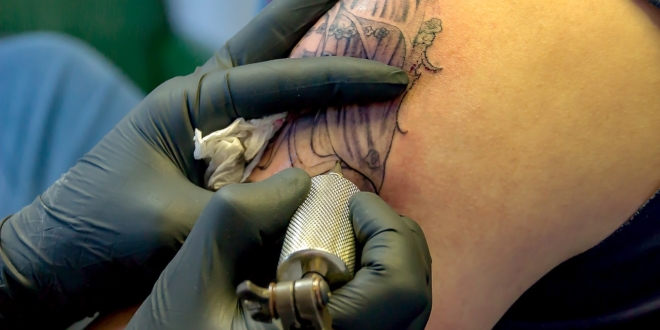Don’t get me wrong, but who said that tattooing is risk-free? I mean didn’t mean to disrespect my fellow tattoo artists and my passion tattoo art, but it’s not just about us. There’s a number of “potential risks of the practice” if you don’t execute your art in a proper, clean, and professional way. Which medical procedure that includes blood opened skin wounds and days of aftercare is risk-free? I am completely averred that I’m injecting a foreign object into my (your) skin. Our bodies will detect that object as an “enemy,” and it will try to get rid of him from the moment of the injection till the day you die.
I didn’t want to start today’s subject like this today, but I think that tattoo art is a subject that we need to discuss honestly. The problem is quite simple. People are more willing to talk about what is cool to tattoo and the prices than to explore more important subjects like the one we’re talking about here. Of course, there are exceptions from this example, but the numbers are not good.
Tattoo art is a very delicate process that includes several different and sensitive procedures. The first sting of the needle will start an inflammatory process that is going to call in to help its “soldiers” called Macrophages. Macrophages will “eat” the ink part by part, and they are going to “clean” our system through the lymph nodes. Any tattoo will fade if your body succeeds in breaking the tattoo ink particles.
Tattoo (medical) intervention is dangerous and the risks are bigger if:
1. If you’re not trained (educated) to do your job
2. You instruments (tools) are not CLEAN AND STERILE
3. You’re not taking proper aftercare of your skin wound
And last but not least:
4. You don’t use proper working material (Instruments, fluids)
The first three are 100% up to you. If you want to learn, you can. It’s’s going to take some time, but if you are willing to make some sacrifices and try hard enough, you’re gone succeed to create almost a “risks free” working environment. Your instruments can be clean and sterile because you can be trained by a professional (if you want to, you can learn from varieties of literature) how to do it. There are different kinds of chemicals that you can use in the process. Of course, an autoclave is a must-have.
The aftercare of your tattoo (wound) varies from artist to artist. There are several different kinds, and nobody can’t say which one is good and which is bad. We are going to expand that theme with more details just a bit later.
And we have come to the part which is not 100% up to us. Even if we master the other three subjects perfectly, this one can mean a lot because there’s a “third party” involved. The instruments, inks, fluids, and all other materials that we use during tattooing are manufactured by someone else. That means that it’s impossible to know every single detail about this equipment because we are not involved in its creation.
One of the most vital part of this “Potential Risks” subject is, of course, the Ink.
(End of part one)






